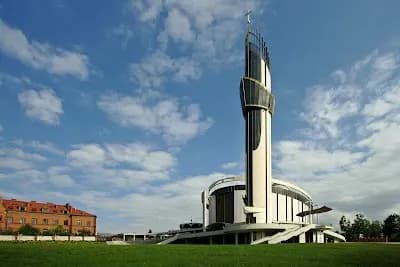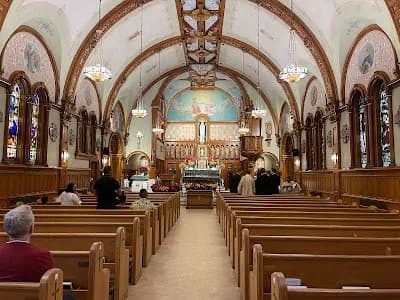
St. Faustina Kowalska
Apostle of Divine Mercy
"Jesus, I trust in You."
Saint Facts
- Origin:
- Poland
- Gender:
- Female
- Vocation:
- Nun
- Birth:
- 1905
- Feast Day:
- Oct 5
- Death:
- 1938
Saint Details
St. Faustina Kowalska, born Helena Kowalska on August 25, 1905, in Głogowiec, Poland, was the third of ten children in a poor but devout Catholic family. At the age of seven, she felt a calling to religious life while attending the Exposition of the Blessed Sacrament. However, her family's financial struggles delayed her entry into the convent. In 1924, at a dance, she had a vision of a suffering Jesus, which led her to leave for Warsaw and eventually join the Congregation of the Sisters of Our Lady of Mercy in 1925. She took the name Sister Maria Faustina of the Blessed Sacrament and spent her religious life working as a cook, gardener, and porter. Her mystical experiences, documented in her diary, *Divine Mercy in My Soul*, became the foundation for the Divine Mercy devotion. She died of tuberculosis on October 5, 1938, in Kraków, Poland. The path to her sainthood began in 1965 when Archbishop Karol Wojtyła initiated investigations into her life. She was beatified on April 18, 1993, and canonized on April 30, 2000, by Pope John Paul II, who also established Divine Mercy Sunday. Her legacy as the "Apostle of Divine Mercy" continues to inspire millions worldwide.
Associated Holy Sites

The Congregation of the Sisters of Our Lady of Mercy
Siostry Faustyny 3, 30-608 Kraków, Poland

National Shrine of The Divine Mercy, Stockbridge, MA
2 Prospect Hill Rd, Stockbridge, MA 01262, USA

Birthplace of St. Faustina
99-140 Głogowiec, Poland
Details for: The Congregation of the Sisters of Our Lady of Mercy
The Congregation of the Sisters of Our Lady of Mercy, located in Kraków, Poland, is a significant Catholic religious site closely associated with Saint Faustina Kowalska and the Divine Mercy devotion. Established in the 19th century, the congregation is dedicated to spreading the message of God’s mercy and providing spiritual and material assistance to those in need. The site holds deep religious importance as it was here that Saint Faustina received her visions of Jesus, which led to the creation of the Divine Mercy image and the Chaplet of Divine Mercy. Pilgrims visit to pray at the chapel where Saint Faustina lived and worked, seeking spiritual renewal and inspiration from her life and teachings. The site also houses relics and exhibits related to her life, making it a focal point for those devoted to the Divine Mercy message. Its serene atmosphere and historical significance draw visitors from around the world.
🙏 No spam. Just grace. Unsubscribe anytime.